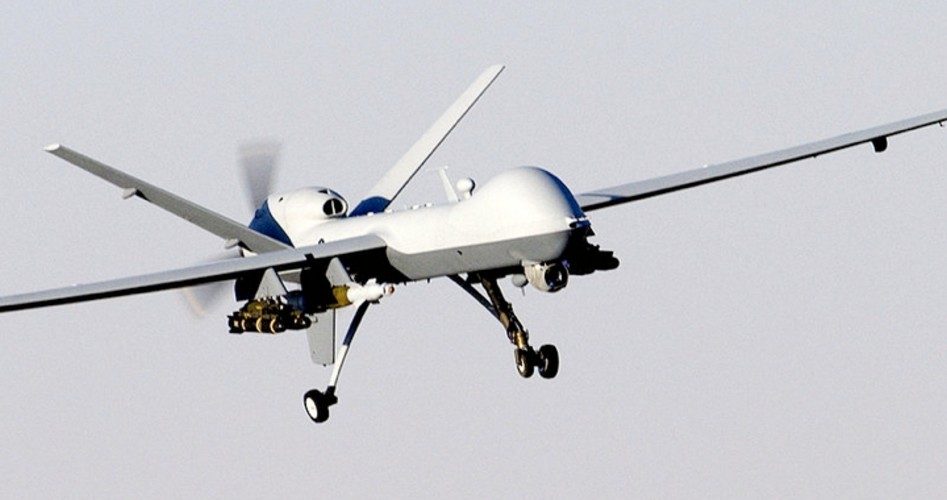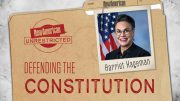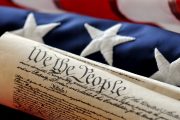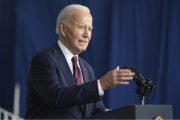
On a near daily basis, The New American chronicles the approach of the day when squadrons of drones will fill the skies of the United States. Scores of these unmanned aerial vehicles (UAV) will be deployed by state and local law enforcement, adding to the many already deployed by the federal government.
With the rise of the drones comes the rise of several critical questions of Constitutionality of their potential uses. One of the most crucial of those inquiries concerns the application of the Fourth Amendment’s prohibition against “unlawful searches and seizures” and the requirement that warrants be supported by affidavits “particularly describing the place to be searched, and the persons or things to be seized.”
As readers will recall, in June Senator Rand Paul introduced a bill “To protect individual privacy against unwarranted governmental intrusion through the use of unmanned aerial vehicles commonly called drones.” Paul’s bill mandates that:
[A] person or entity acting under the authority [of], or funded in whole or in part by, the Government of the United States shall not use a drone to gather evidence or other information pertaining to criminal conduct or conduct in violation of a statute or regulation except to the extent authorized in a warrant that satisfies the requirements of the Fourth Amendment to the Constitution of the United States.
In support of his measure, Senator Paul explained that “Americans going about their everyday lives should not be treated like criminals or terrorists and have their rights infringed upon by military tactics.”
A separate bill offered in the House of Representatives by Representative Edward Markey (D-Mass.) requires that drone operators (including “law enforcement agency, contractor, or subcontractor”) report all information collected by the drones to the appropriate government agency. Additionally, the data proposed to be gathered by these operators must be reported by the Federal Aviation Administration on its website. In a statement in support of his bill, Representative Markey said, “When it comes to privacy protections for the American people, drones are flying blind.”
Just how many of these drones will be watching us? According to a story published by UPI, “U.S. News & World Report says some analysts estimate ‘there may be as many as 30,000 unmanned drones operated in the United States by 2020 for uses such as wildfire containment and surveillance, law enforcement and surveying.’”
As we have reported, a drone was already used by law enforcement to track and apprehend a suspect. It’s been about a year since a North Dakota man was arrested after a local SWAT team tracked him down using a Predator drone it borrowed from the Department of Homeland Security.
Although the story has not been widely reported, Rodney Brossart became one of the first American citizens (if not the first) arrested by local law enforcement with the use of a federally owned drone aerial surveillance vehicle after holding the police at bay for over 16 hours.
Brossart’s run-in with law enforcement began after six cows found their way onto his property (about 3,000 acres near Lakota, North Dakota) and he refused to turn them over to officers. In fact, according to several sources, Brossart and a few family members ran police off his farm at the point of a gun. Naturally, police weren’t pleased with Brossart’s brand of hospitality, so they returned with a warrant, with a SWAT team, and with a determination to apprehend Brossart and the cows.
A standoff ensued, and the Grand Forks police SWAT team made a call to a local Air Force base where they knew a Predator drone was deployed by the DHS. About three years before the Brossart incident, the police department had signed an agreement with DHS for the use of the drone. No sooner did the call come in than the drone was airborne and Brossart’s precise location was pinpointed with laser-guided accuracy. The machine-gun toting SWAT officers rushed in, tased then arrested Brossart on various charges including terrorizing a sheriff, and the rest is history. Literally.
As the matter proceeds through the legal system, Bruce Quick, the lawyer representing Brossart, is decrying the “guerilla-like police tactics” used to track and capture his client, as well as the alleged violation of the Fourth Amendment’s protection against unwarranted searches and seizures.
While the police admittedly possessed an apparently valid search warrant, Quick asserts that no such judicial go-ahead was sought or obtained for the use of the Predator to track the suspect. Therein lies the constitutional rub.
In an interview with the press, Quick claims that the police exceeded their authority in several instances, especially when they decided to go around the Fourth Amendment and illegally search Brossart’s farm. “The whole thing is full of constitutional violations,” he says.
“Unmanned surveillance aircraft were not in use prior to or at the time Rodney Brossart is alleged to have committed the crimes with which he is charged,” wrote state prosecutor Douglas Manbeck, as quoted by U.S. News.
Manbeck defends the deployment of the drone, writing that “The use of unmanned surveillance aircraft is a non-issue in this case because they were not used in any investigative manner to determine if a crime had been committed. There is, furthermore, no existing case law that bars their use in investigating crimes.”
On August 1, Judge Joel Medd agreed with the state and denied the defense’s motion to dismiss, holding that there “was no improper use of an unmanned aerial vehicle” and that the drone “appears to have had no bearing on these charges being contested.”
While Brossart was the first to assert that his Fourth Amendment rights were denied by the use of a drone to track him, given the proliferation of UAVs, he will not be the last.
In fact, it doesn’t take a crystal ball to predict that one such challenge will eventually work its way to the Supreme Court, where the justices will pronounce their opinion (or opinions) of the lawful boundaries of the use of drones in law enforcement.
Until the first case is granted cert by the high court, a few recent decisions provide some indication of how the Court might rule on a case complaining of an unmanned violation of the Fourth Amendment.
For example, UPI describes how in the case of Indianapolis v. Edmond, in a 6-3 split, the Supreme Court held that Indianapolis’s “policy of setting up roadblocks to check for unlawful drugs was unconstitutional.” In the majority opinion, former Justice Sandra Day O’Connor explained the ruling, declaring that the primary purpose of the roadblocks was “indistinguishable from the general interest in crime control” and thus they “violate the Fourth Amendment.”
A year later, in its decision in the case of Kyllo v. United States, the Court once again found the government exceeded its constitutional authority.
The UPI summarizes the facts: “In Kyllo, a federal government agent used a ‘thermal imaging device’ to scan a triplex in Florence, Ore., without a warrant to determine whether marijuana was being grown. The scan showed Danny Kyllo’s garage was hot compared to the rest of his home and the neighborhood, consistent with the high-intensity lamps typically used for indoor marijuana growing.”
Relying in part on the Court’s decision in the case of Katz v. United States (1967), in which the the use of listening devices outside of public phone booths was struck down as a violation of the “reasonable expectation to privacy” under the Fourth Amendment, Justice Antonin Scalia wrote for the majority that when the “government uses a device that is not in general public use, to explore details of a private home that would previously have been unknowable without physical intrusion, the surveillance is a Fourth Amendment ‘search,’ and is presumptively unreasonable without a warrant.”
Regardless of these decisions seemingly supporting the Fourth Amendment, the Supreme Court has been known to reduce the scope of constitutional liberty so The New American will continue to follow this important constitutional issue.



